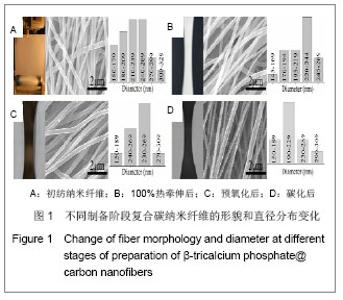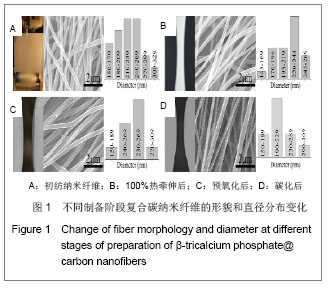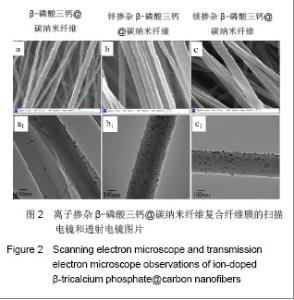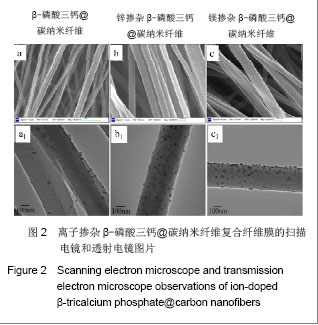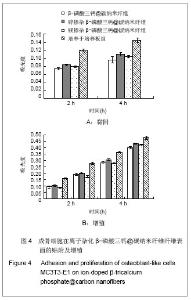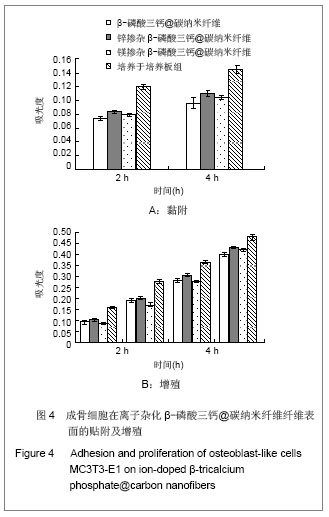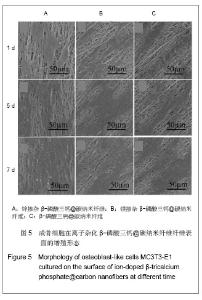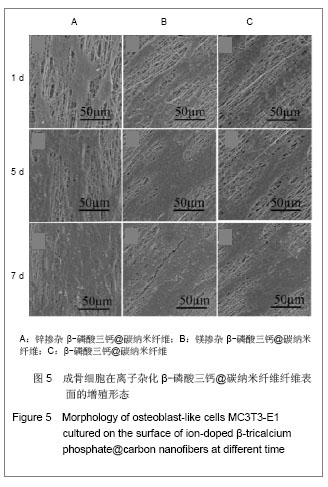| [1]Chen G,Ushida T,Tateishi T.Hybrid biomaterials for tissue engineering: A preparative method for PLA or PLGA/collagen hybrid sponges.Adv Mater. 2000;12(6):455-457.[2]Venkatesan J,Qian ZJ,Ryu BM,et al.Preparation and characterization of carbon nanotube-grafted-chitosan-Natural hydroxyapatite composite for bone tissue engineering. Carbohydr Polym. 2011;83(2):569-577.[3]Nayak TR,Li J,Phua LC,et al. Thin films of functionalized multiwalled carbon nanotubes as suitable scaffold materials for stem cells proliferation and bone formation.ACS Nano. 2010;4:7717-7725.[4]Tran PA,Zhang LJ,Webster TJ. Carbon nanofibers and carbon nanotubes in regenerative medicine. Advan Drug Deliv Rev.2009;61(12):1097-1114.[5]Meng J,Song L,Meng J,et al. Using single-walled carbon nanotubes nonwoven films as scaffolds to enhance long-term cell proliferation in vitro. J Biomed Mater Res. 2006;79(2): 298-306.[6]Jia XE,Zhou YP,Tan L,et al. Hydroxyapitite-multiwalled carbon nanotubes nanocomposite for adhesion and electrochemical study of human osteoblast-like cells (MG-63). Electroch Acta. 2009;54:3611-3617.[7]Elias KL,Price RL,Webster TJ.Enhanced functions of osteoblasts on nanometer diameter carbon fibers. Biomaterials. 2002;23(15):3279-3287.[8]Pricea RL,Waid MC,Haberstroh KM,et al.Selective bone cell adhesion on formulations containing carbon nanofibers. Biomaterials.2003;24(11):1877-1887.[9]Prabhakaran MP,Venugopal J,Ramakrishna S. Electrospun nanostructured scaffolds for bone tissue engineering.Acta Biomater.2009;5(8):2884-2893.[10]Liang DH,Hsiao BS,Chu B. Functional electrospun nanofibrous scaffolds for biomedical applications. Adv Drug Deliv Rev. 2007;59:392-412.[11]Huang ZM,Zhang YZ,Kotaki M,et al.A review on polymer nanofibers by electrospinning and their applications in nanocomposites.Compos Sci Technol. 2003;63:2223-2253.[12]Liu HY,Cai Q,Lian PF, et al. The biological properties of carbon nanofibers decorated with β-tricalcium phosphate nanoparticles.Carbon. 2010;48:2266-2272.[13]Liu HY, Cai Q,Lian PF,et al. β-tricalcium phosphate nanoparticles adhered carbon nanofibrous membrane for human osteoblasts cell culture. Mater Lett. 2010;64:725-728.[14]Rangavittal N,Landa-Cánovas AR,González-Calbet JM,et al.Structural study and stability of hydroxyapatite and β-tricalcium phosphate: Two important bioceramics. J Biomed Mater Res.2000;51(4):660-668.[15]Tao J,Jiang W,Zhai H,et al.Structural components and anisotropic dissolution behaviors in one hexagonal single crystal of β-tricalcium phosphate. Cryst Growth Des.2008; 8:2227-2234.[16]Wei X,Ugurlu O,Ankit A,et al. Dissolution behavior of Si, Zn-codoped tricalcium phosphates. Mater Sci Eng C.2009; 29:126-135.[17]Zaichick V, Zaichick S,Karandashev V, et al. The effect of age and gender on Al, B, Ba, Ca, Cu, Fe, K, Li, Mg, Mn, Na, P, S, Sr, V, and Zn contents in rib bone of healthy humans. Biologic Trace Elem Res. 2009;129:107-115.[18]Landi E,Tampieri A,Mattioli-Belmonte M,et al. BiomimeticMg- and Mg,CO3-substituted hydroxyapatites: synthesis characterization and in vitro behaviour. J Eur Ceram Soc. 2006;26(13):2593-2601.[19]Miao S, Cheng K, Weng W,et al. Fabrication and evaluation of Zn containing fluoridated hydroxyapatite layer with Zn release ability. Acta Biomater. 2008;4:441-446.[20]Zhang S, Zhang Y,Cai Q,et al.Beijing Huagong Daxue Xuebao. 2011;38(2):69-75.张慎,张歆,蔡晴,等.左旋聚乳酸纳米纤维膜的热处理研究[J].北京化工大学学报:自然科学版,2011,38(2):69-75.[21]Zhang S,Cai Q,Zhang J,et al.Shengwu Yixue Gongchengxue Zazhi. 2011;28(5):951-956.张慎,蔡晴,张静,等.热处理改善聚乳酸纤维膜力学及细胞阻隔性能[J].生物医学工程学杂志,2011,28(5):951-956.[22]Zhang XH,Cai Q,Zhang S,et al. Calcium ion release and osteoblastic behavior of gelatin/beta-tricalcium phosphate composite nanofibers fabricated by electrospinning. Mater Lett.2012;73:172-175. |
